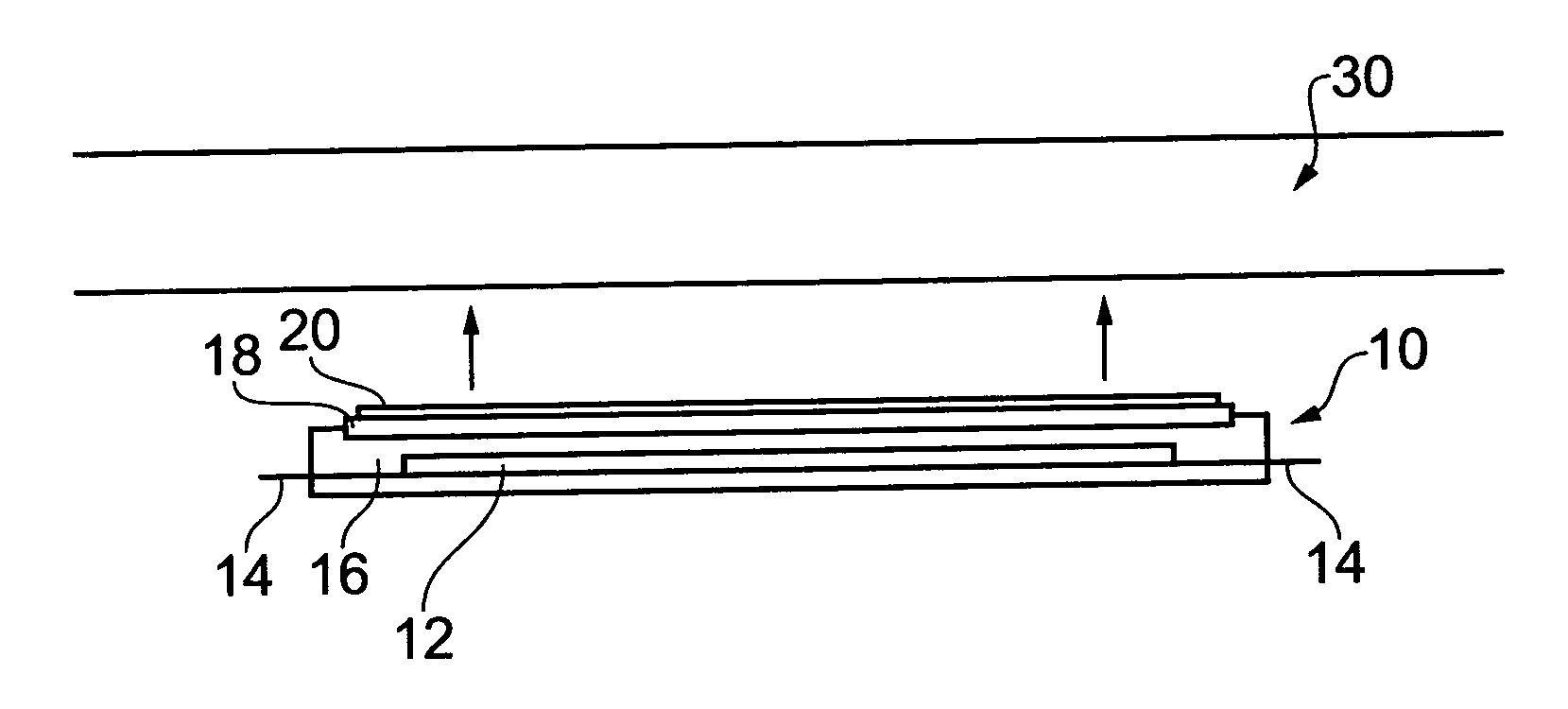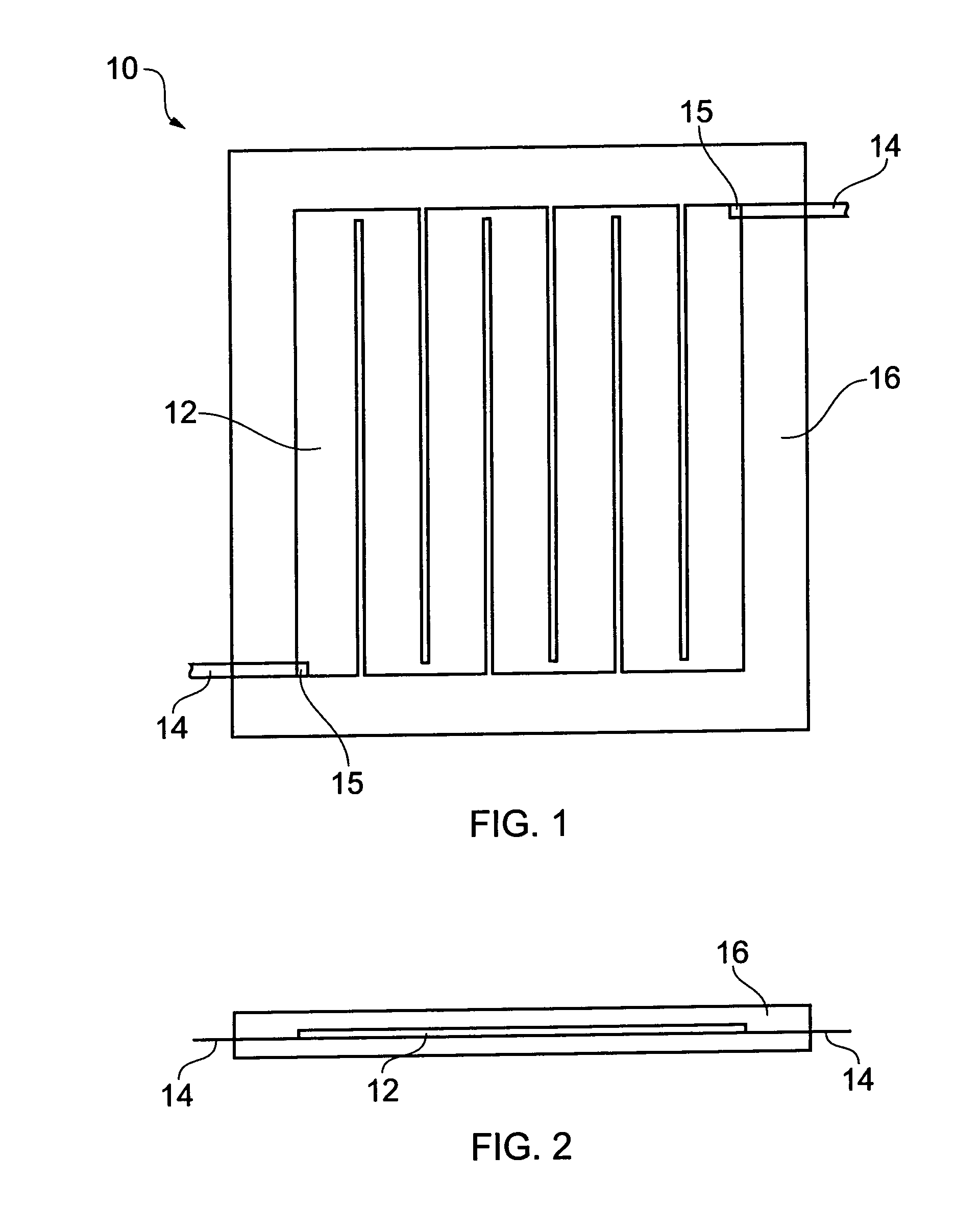Bonding of thermoplastics
a thermoplastic and bonding technology, applied in the field of heater mats, can solve the problems of limited heating power known heater mats can produce, dielectric materials used in heater mats have limited operating temperatures, and the heater mats of this kind suffer from a number of problems, so as to achieve the effect of improving stability
- Summary
- Abstract
- Description
- Claims
- Application Information
AI Technical Summary
Benefits of technology
Problems solved by technology
Method used
Image
Examples
Embodiment Construction
[0032]Particular embodiments will now be described by way of example only in the following with reference to the accompanying drawings.
[0033]According to an embodiment of this invention, there can be provided an aircraft leading edge ice protection system. The system includes a thermoelectric heater mat that includes a thermoplastic layer within which is embedded an electrically resistive heater element. The heater mat is provided with one or more adhesive receiving layers to facilitate attachment of the mat to a surface using an adhesive. Embodiments of this invention also provide methods of making such an ice protection system.
[0034]Thermoplastics are characterised by their material properties as a function of temperature. In particular, thermoplastic materials are plastic (deformable) in a temperature between an upper transition temperature Tm and a lower transition temperature Tg. Above Tm, thermoplastic materials melt to form a liquid. Below Tg they enter a brittle, glassy stat...
PUM
| Property | Measurement | Unit |
|---|---|---|
| operating temperature | aaaaa | aaaaa |
| operating temperature | aaaaa | aaaaa |
| Young's modulus | aaaaa | aaaaa |
Abstract
Description
Claims
Application Information
 Login to View More
Login to View More - R&D
- Intellectual Property
- Life Sciences
- Materials
- Tech Scout
- Unparalleled Data Quality
- Higher Quality Content
- 60% Fewer Hallucinations
Browse by: Latest US Patents, China's latest patents, Technical Efficacy Thesaurus, Application Domain, Technology Topic, Popular Technical Reports.
© 2025 PatSnap. All rights reserved.Legal|Privacy policy|Modern Slavery Act Transparency Statement|Sitemap|About US| Contact US: help@patsnap.com



